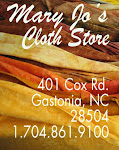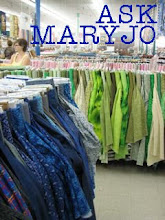Are you new to quilting? You are probably very excited about starting a quilt project, but do you feel confused by all the different colors and styles of fabric? How do you know what to choose and where to start? You are not alone, even experienced quilters can be overwhelmed by the enormous selection of quilting fabrics at our store!
We asked Aimee Griffin, owner of Overall Quilter and Sewing Director at Mary Jo’s Cloth Store to share some tips for selecting fabrics for quilts. Aimee has been quilting, and teaching for many years and has easily picked out hundreds of fabric collections for quilts. Here are Aimee’s tips for narrowing down the choices.
Our first example is a quilt made in one of the beginning quilting classes at Mary Jo’s; the Window Boxes pattern. This quilt has large blocks, medium sized blocks and vertical and horizontal lines.
1. Begin by selecting a “focus print”. This will be the fabric used for the biggest areas and largest pieces in the quilt. In the quilt below, the white background fabric with the red motif is the focus print, used in the 12 ½- inch squares and around the border. This is also where you can use a large scale print: larger blocks = larger prints.
2. Next, select “secondary fabrics” for the next largest sized blocks to tie in with the focus print. On this quilt, the 6 ½-inch blocks are where the secondary fabric will be used. Note that the scale of the print is not as large of a pattern motif but still a pretty design. For this quilt Aimee chose a gray background fabric that is not “matchy” and is a little unexpected – this makes it pop or float over the other colors.
3. Last are the tertiary fabrics, used for the horizontal and vertical lines. This is a place for the eye to rest. Aimee recommends using small-scale prints and tone-on-tone fabrics for this part of the quilt.
Aimee put together a collection of fabrics to illustrate the three rules above. Primary fabric = large floral print
Secondary fabric = coral swirl print
Tertiary fabrics = small blue floral and lime green tone-on-tone
Here is an example of the same quilt in different fabrics, shared by students in a recent class. The same three steps were used but with eye-catching red and green fabrics.
Can you identify the primary, secondary and tertiary fabrics in this quilt?
To learn more about how you can join us for beginning quilting classes, click here: http://maryjos.com/sewing-class-schedule
Another popular style of quilt is a monochromatic design, where fabrics from one color family are combined together. An example is the “Twilight Stars” pattern from Wilmington Prints. This design comes in a kit with the fabrics included so you are ready to go! But you can use the same idea with other quilt patterns.
To replicate this monochromatic look, select fabrics that are all the same scale and colors. Batik fabrics work great for this because they are subtle and blended, and often have hints of other colors within the design. For monochromatic quilts choose fabrics from color families such as purple, blue and green or red, orange and yellow or create a quilt with neutral fabrics such as tan, cream, and ivory. Many of our quilting fabrics are grouped together by color, this makes selecting fabrics for monochromatic quilts easy!
We have discussed the fronts of quilts, but what about the back? Aimee suggests having fun with the backing material, “it doesn’t need to match the front”. For new quilters she recommends choosing a busy, all over pattern for the back, which doesn’t require precise stitches – the stitches will be hidden in the pattern. Aimee’s last piece of advice for choosing fabrics, “of course there are not rules”!














No comments:
Post a Comment